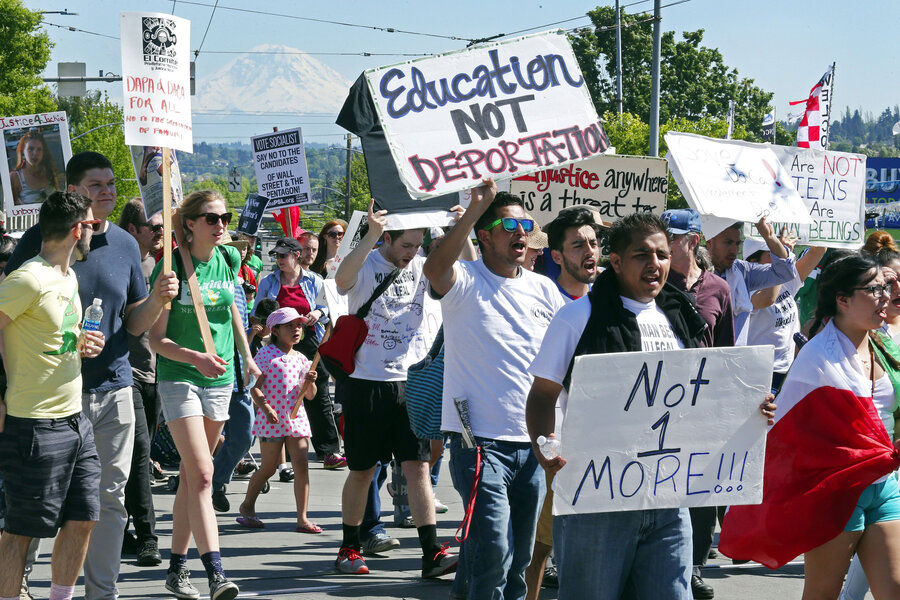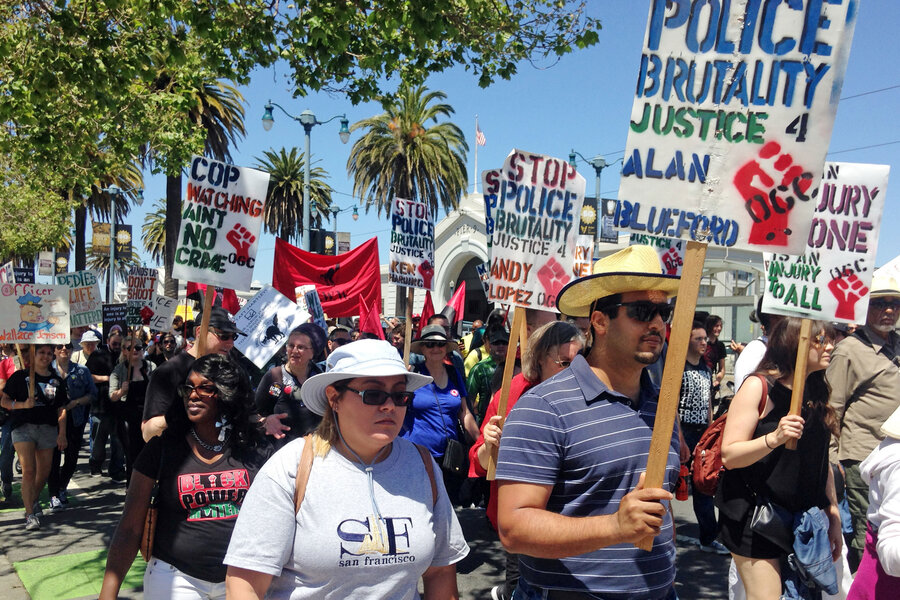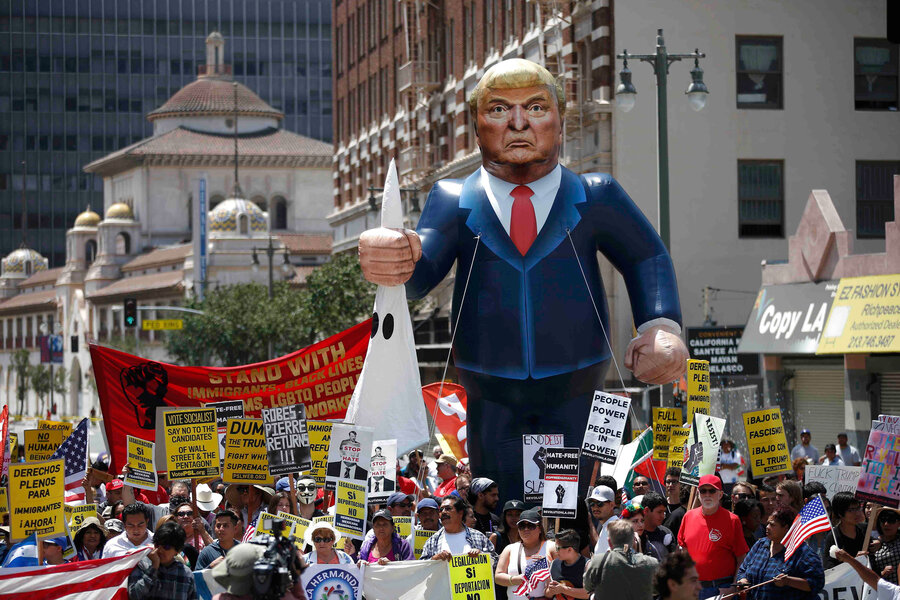West Coast cities see revival of May Day protests
Loading...
Annual May Day protests in Seattle turned violent late Sunday leading to nine arrests and the injury of five police officers after an earlier peaceful march calling for better immigrant and worker rights.
Sunday's protests in Seattle called for better wages, an end to deportations, and support for an Obama administration plan to give permits to undocumented workers whose children are American citizens.
But after 5 p.m., several hundred protesters gathered in Seattle’s financial district for a second un-permitted march, carrying signs including a banner that read "We Are Ungovernable." A rolling blockade of police using pepper spray and so-called blast balls then herded them toward the city's Sodo industrial area, where there were less available destructible targets, the Seattle Times reports.
Police arrested eight men and one girl, on charges that included obstruction, assault, and property destruction. Five officers suffered minor injuries after protesters threw flares, rocks, bricks, and molotov cocktails, according to authorities.
"Unfortunately tonight we had some violence," Seattle Police Chief Kathleen O'Toole told the Associated Press. "Thankfully there were no serious injuries."
Large May Day protests for worker rights have been a long-held North American tradition since the 1880s, at a time when labor movements were fighting for workers rights that the developed world now takes for granted such as the eight-hour workday and labor unions. According to CNN, the date was chosen because it “aligned with the anniversary of the Haymarket affair in Chicago, where police killed four people at a peaceful protest after someone threw a bomb into the crowd."
May Day protest numbers have lessened in recent years, but on Sunday significant protests were also held in Los Angeles, San Francisco, Oakland, and Portland Ore.
The L.A. protests focused on the anti-Donald Trump sentiment that dominated protests that began last week ahead of the California primary.
"In addition to fighting for workers' rights, we are fighting for our dignity this time around, our self-respect," Jorge-Mario Cabrera, a spokesman for the Coalition for Humane Immigrant Rights of Los Angeles, told AP.
"We can certainly encourage folks to look at what they're watching, what they're hearing and have them represent themselves and their families — whether they can vote or not — and say, 'We are not the rapists. We are not the criminals you are talking about. And we are quite good for this country,' " Mr. Cabrera said.
This report contains material from the Associated Press.










